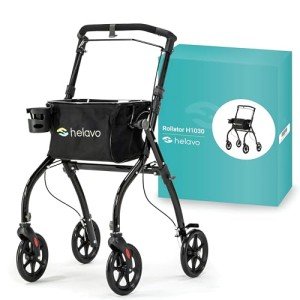Understanding Mobility Aids: Enhancing Independence and Quality of Life
Mobility help play an essential function in supporting individuals with minimal mobility, allowing them to carry out day-to-day activities with higher ease and enhancing their lifestyle. These devices range from basic tools to more complicated equipment, each developed to fit particular needs and offer assistance in various contexts. Brake Walker will dive into the kinds of mobility help readily available, their benefits, and crucial considerations for selection.
What Are Mobility Aids?
Mobility aids are devices created to help people in moving around better and safely, whether in their homes, neighborhoods, or health care settings. They assist reduce the threat of falls, promote self-reliance, and improve the overall quality of life for those with mobility obstacles due to age, impairment, or short-term injuries.
Typical Types of Mobility Aids
The range of mobility aids readily available can be frustrating. Below is a comprehensive table that lays out the most common types, their features, and typical usage cases.
| Kind Of Mobility Aid | Description | Typical Use Cases |
|---|---|---|
| Wheelchairs | Wheeled gadgets for people not able to walk; can be manual or electric. | Long-lasting impairments, post-surgical recovery |
| Walkers | Frame-like gadgets that offer support while walking; often includes wheels for simpler movement. | Older grownups, those recuperating from surgical treatment |
| Walking sticks | Single-point or multi-point rods used for balance and support. | Mild to moderate mobility problems, instability |
| Crutches | Wisely created support for people with leg injuries. | Short-lived injuries, recovery from surgical treatment |
| Scooters | Motorized mobility help for outdoor use or fars away. | Persistent conditions that restrict walking capacity |
| Lift Chairs | Recliner chairs that can elevate users for easier standing. | Limited strength or balance, elderly people |
| Home Modifications | Structural changes such as ramps and grab bars to enhance access. | Numerous levels of mobility impairment |
The Benefits of Mobility Aids
Mobility help supply various benefits to users:
- Enhanced Independence: Users can move more easily, minimizing their reliance on caregivers.
- Increased Safety: Aids like walkers and walking canes assist keep balance and minimize fall risks, which is particularly essential for elderly users.
- Improved Quality of Life: With higher mobility, users can engage more completely in social, recreational, and personal activities.
- Increased Accessibility: Mobility help can assist users navigate their homes and neighborhoods more efficiently, causing enhanced access to essential services.
- Pain Relief: By providing support while walking or standing, mobility aids can ease some discomfort related to conditions like arthritis.
Factors to consider for Choosing the Right Mobility Aid
Picking the appropriate mobility aid often needs careful factor to consider. Here are some necessary factors to keep in mind:
- Level of Mobility: Different aids cater to various levels of mobility. Evaluate the person's strength and balance to figure out the most suitable alternative.
- Weight Capacity: Ensure the chosen device supports the user's weight.
- User Environment: Consider where the mobility aid will be used, such as inside, outdoors, or in crowded areas.
- Ease of Use: The device must be easy to run for the person, taking into consideration their strength and mastery.
- Storage and Transportation: Consider how the mobility aid will be carried, especially if it is utilized outside the home.
- Expense and Insurance Coverage: Factor in the price of the device and examine if insurance can assist cover the expense.
Frequently Asked Questions (FAQ)
Q1: How do I understand which mobility aid is best for me?A1: Consultation with a health care company is advised. They can assess your particular requirements and recommend appropriate help based on your mobility level, health condition, and living environment.
Q2: Are mobility aids covered by insurance coverage?A2: Many insurance strategies do cover mobility help, but protection differs substantially. Talk to your insurance coverage company concerning specifics.
Q3: Can mobility help be leased?A3: Yes, lots of medical supply companies provide rental alternatives for mobility aids, which can be a cost-effective solution for momentary requirements.
Q4: How can I guarantee my mobility aid is preserved?A4: Regular upkeep is vital for security and durability. Follow the manufacturer's standards for upkeep and take it for routine professional checks.
Q5: What modifications can be made to homes for better mobility?A5: Ramps, grab bars, and non-slip floor covering are very important modifications that can boost safety and availability for users of mobility aids.
Mobility aids are indispensable tools that empower individuals with restricted mobility. By boosting independence and promoting security, these help significantly improve the lifestyle for users. When picking a mobility aid, it is essential to think about specific requirements, preferences, and environments to take full advantage of advantages. Consulting a healthcare expert can help navigate the alternatives offered. As society continues to prioritize availability, having actually informed discussions about mobility aids will ensure that individuals can lead fuller, more independent lives.
In the grand scheme, mobility help are not just physical devices; they are keys to opening a world of possibilities and encourage active involvement in life. From wheelchairs to walking canes, each aid provides distinct advantages created to satisfy the varied needs of users, promoting a much better, more inclusive neighborhood.

